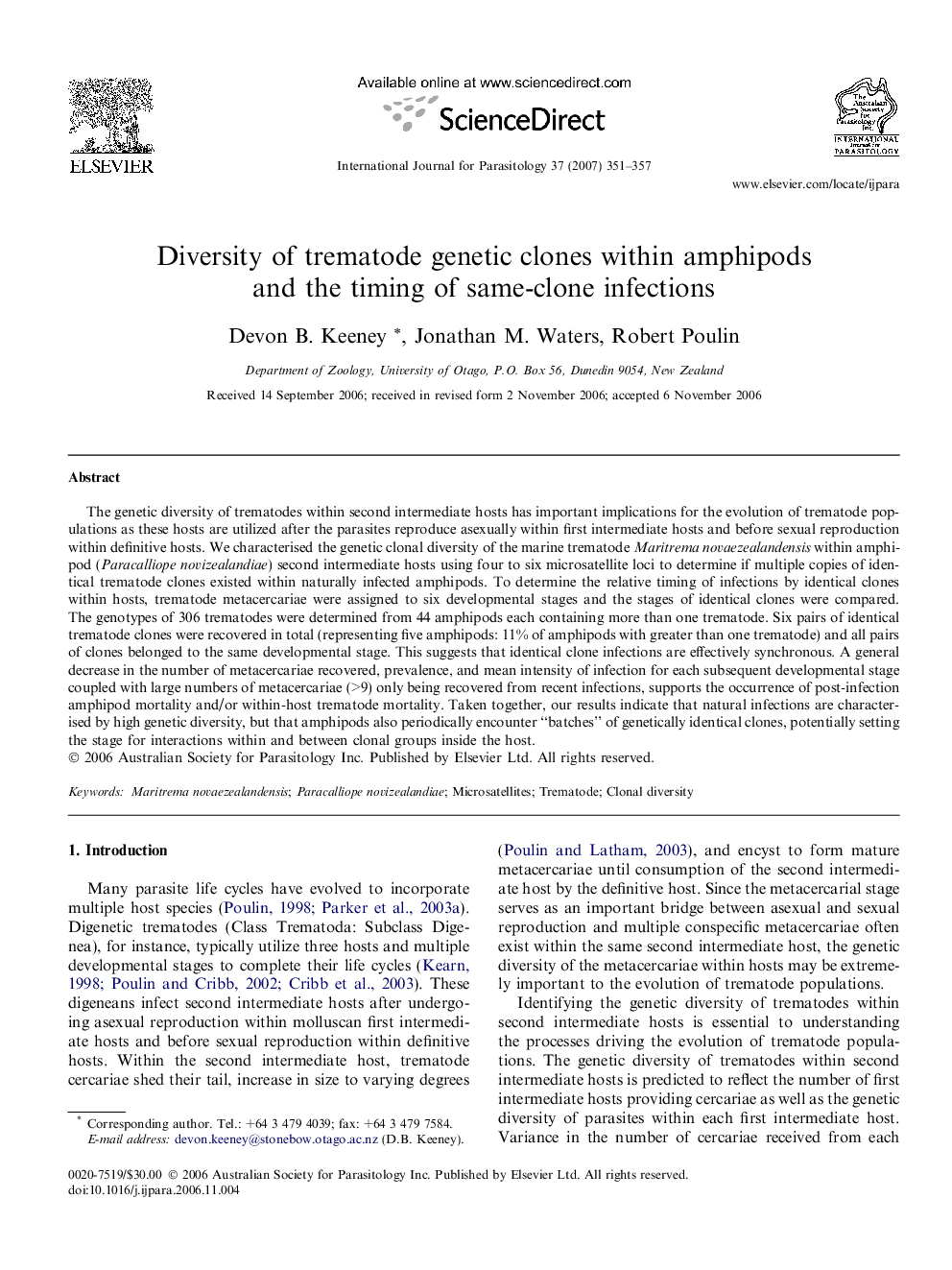| Article ID | Journal | Published Year | Pages | File Type |
|---|---|---|---|---|
| 2437003 | International Journal for Parasitology | 2007 | 7 Pages |
The genetic diversity of trematodes within second intermediate hosts has important implications for the evolution of trematode populations as these hosts are utilized after the parasites reproduce asexually within first intermediate hosts and before sexual reproduction within definitive hosts. We characterised the genetic clonal diversity of the marine trematode Maritrema novaezealandensis within amphipod (Paracalliope novizealandiae) second intermediate hosts using four to six microsatellite loci to determine if multiple copies of identical trematode clones existed within naturally infected amphipods. To determine the relative timing of infections by identical clones within hosts, trematode metacercariae were assigned to six developmental stages and the stages of identical clones were compared. The genotypes of 306 trematodes were determined from 44 amphipods each containing more than one trematode. Six pairs of identical trematode clones were recovered in total (representing five amphipods: 11% of amphipods with greater than one trematode) and all pairs of clones belonged to the same developmental stage. This suggests that identical clone infections are effectively synchronous. A general decrease in the number of metacercariae recovered, prevalence, and mean intensity of infection for each subsequent developmental stage coupled with large numbers of metacercariae (>9) only being recovered from recent infections, supports the occurrence of post-infection amphipod mortality and/or within-host trematode mortality. Taken together, our results indicate that natural infections are characterised by high genetic diversity, but that amphipods also periodically encounter “batches” of genetically identical clones, potentially setting the stage for interactions within and between clonal groups inside the host.
